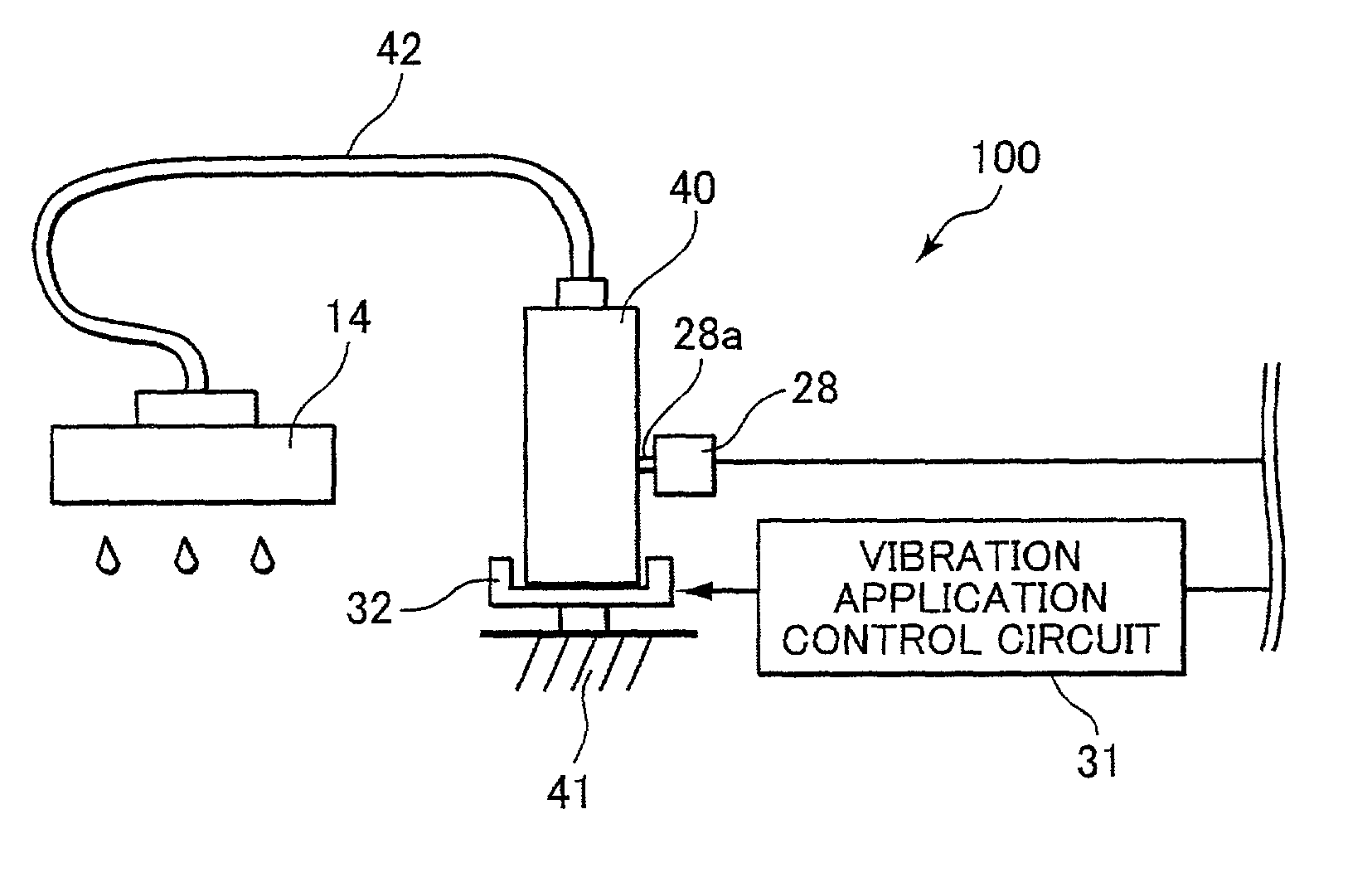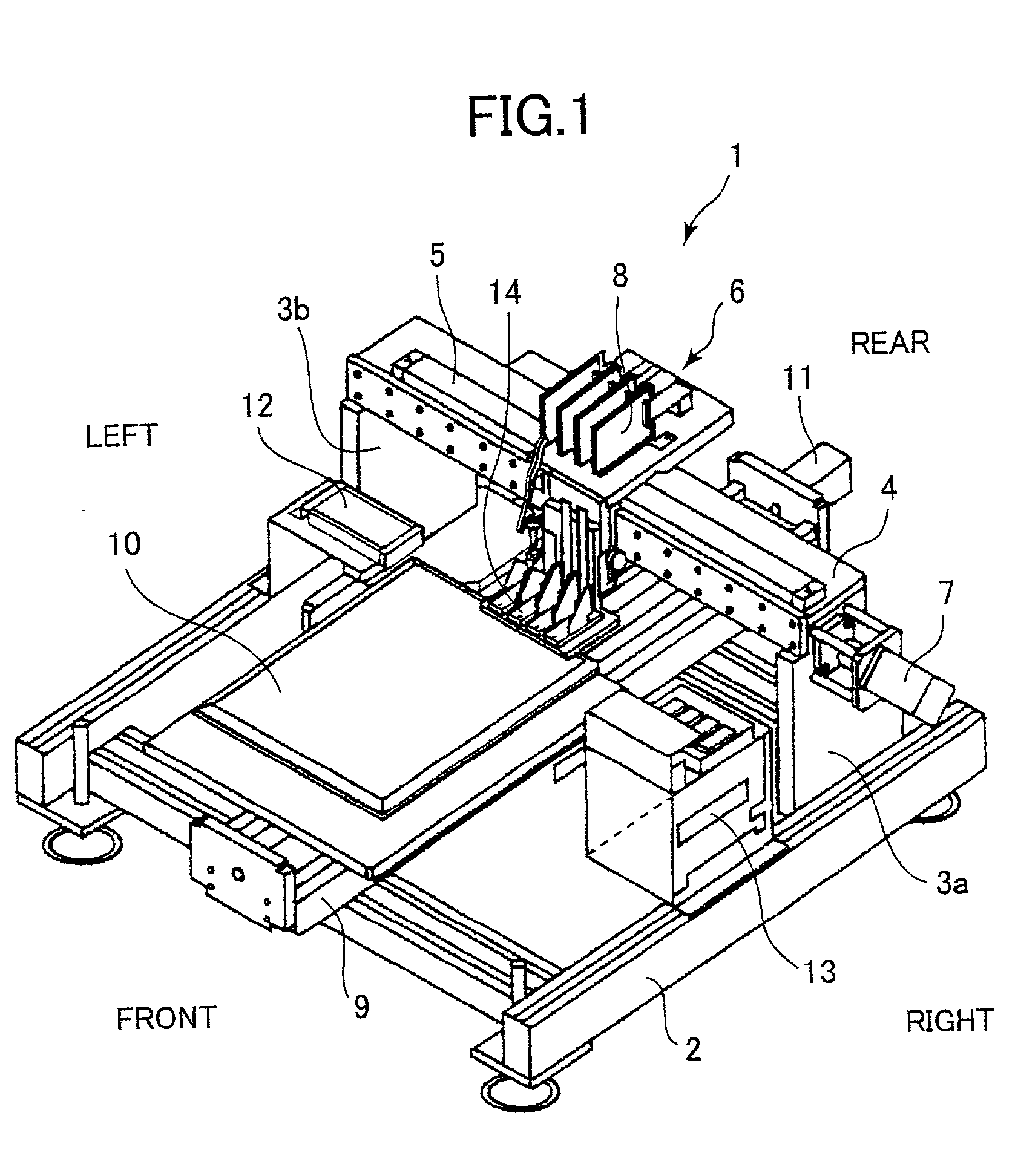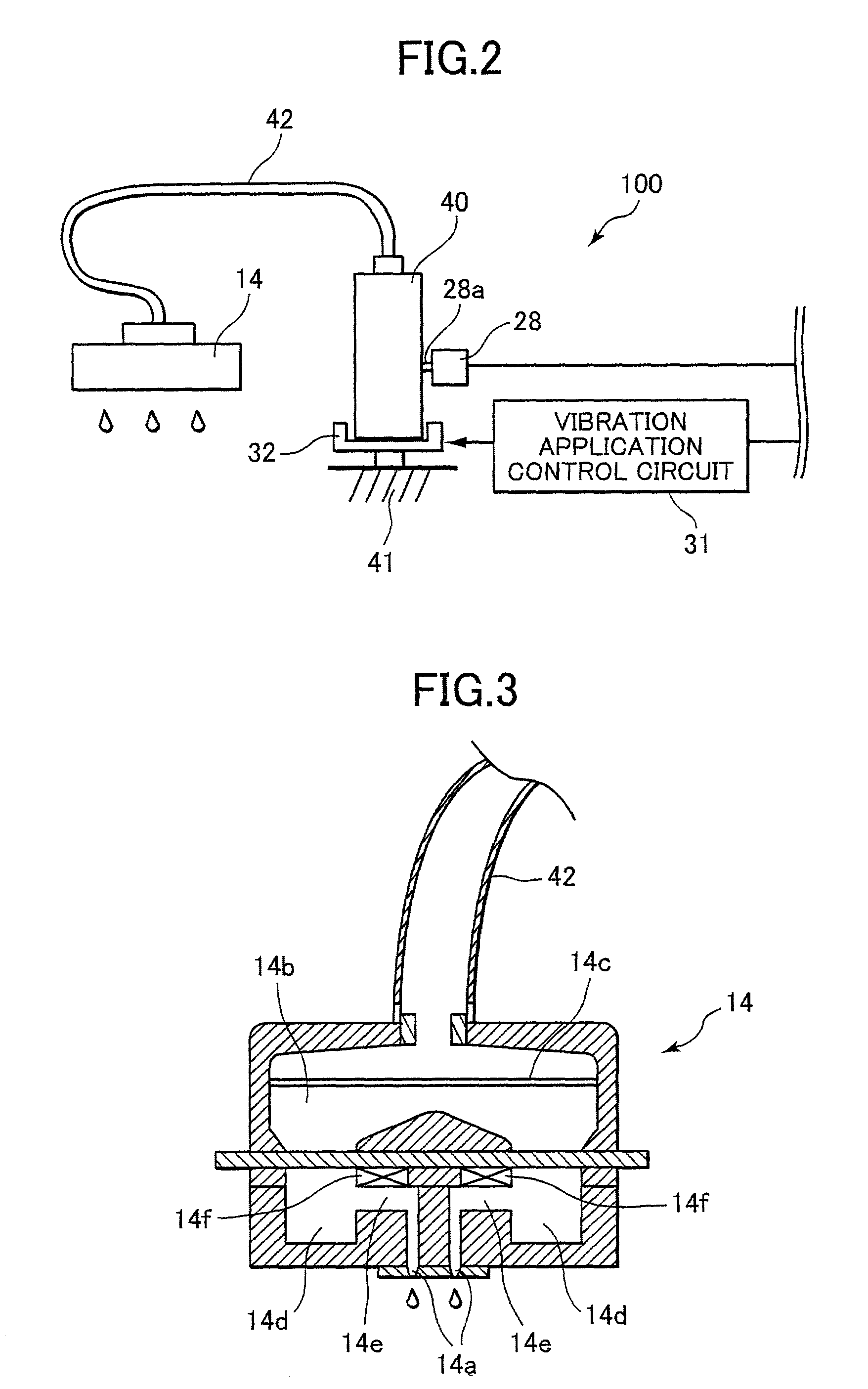Inkjet device including ultrasonic vibrator for applying ultrasonic vibration to ink
a technology of ultrasonic vibration and inkjet, which is applied in the direction of printing, other printing apparatus, etc., can solve the problems of erratic printing results, easy cohesion of pigments in ink, and increase in molecular weight distribution
- Summary
- Abstract
- Description
- Claims
- Application Information
AI Technical Summary
Problems solved by technology
Method used
Image
Examples
first embodiment
[0027] First, an inkjet printer 1 according to the present invention will be described. As shown in FIG. 1, the inkjet printer 1 includes a base frame 2, support frames 3a, 3b, an X-axis frame 4, and a linear scale 5. The base frame 2 is formed in a substantially rectangular shape, and the support frames 3a, 3b are disposed with an upright posture on a rear end of the base frame 2. The X-axis frame 4 spans between the support frames 3a and 3b. The linear scale 5 configures the X-axis of the X-axis frame 4.
[0028] A carriage 6 is mounted on the linear scalar 5, and supports print heads 14 and drive circuit boards 8. Each drive circuit board 8 drives a corresponding print head 14 to eject one of four colors of ink: black, magenta, cyan, and yellow. An X-axis motor 7 is provided on a right end of the X-axis frame 4 for driving the carriage 6 to slidingly move reciprocally across the linear scalar 5 in the lengthwise direction of the linear scalar 5.
[0029] A Y-axis frame 9 is disposed on...
second embodiment
[0042] Next, a vibration application control routine B performed will be described while referring to the flowchart in FIG. 10. First, it is determined in S21 whether or not the print head 14 is presently being used to print. If not (S21:NO), then in S23 the light propagation sensor 34a detects a light propagation rate of the ink 51 inside the sub tank 50, and in S25 it is determined whether or not if the detected light propagation rate is greater than a predetermined threshold value. This determination can be made using a well-known dynamic light scattering method, such as Doppler scattered light analysis. If the detected light propagation rate is equal to or lower than the predetermined threshold value (S25:NO), then this means that pigments in the ink 51 have cohered or settled out, so that a vibration application routine is executed in S26. In this vibration application routine, first the CPU 20 transmits a vibration application command to the vibration application control circ...
fourth embodiment
[0054] Next, a vibration application control routine C performed will be described while referring to the flowchart in FIG. 16. First, in S31, the molecular-weight distribution detector 34c detects the molecular-weight distribution of the ink. Then, in S33, it is determined whether the detected molecular-weight distribution is greater than a predetermined threshold value. If not (S33:NO), this means that the molecular-weight distribution of the ink is normal. Then, the routine returns to S31.
[0055] On the other hand, if it is determined in S33 that the detected molecular-weight distribution is equal to or lower than the predetermined threshold value (S33:YES), this means that the molecular-weight distribution of the ink is not normal, so that a vibration application routine is executed in S35. In this vibration application routine, first the CPU 20 transmits a vibration application command to the vibration application control circuit 31. Then, the vibration application control circ...
PUM
 Login to view more
Login to view more Abstract
Description
Claims
Application Information
 Login to view more
Login to view more - R&D Engineer
- R&D Manager
- IP Professional
- Industry Leading Data Capabilities
- Powerful AI technology
- Patent DNA Extraction
Browse by: Latest US Patents, China's latest patents, Technical Efficacy Thesaurus, Application Domain, Technology Topic.
© 2024 PatSnap. All rights reserved.Legal|Privacy policy|Modern Slavery Act Transparency Statement|Sitemap



